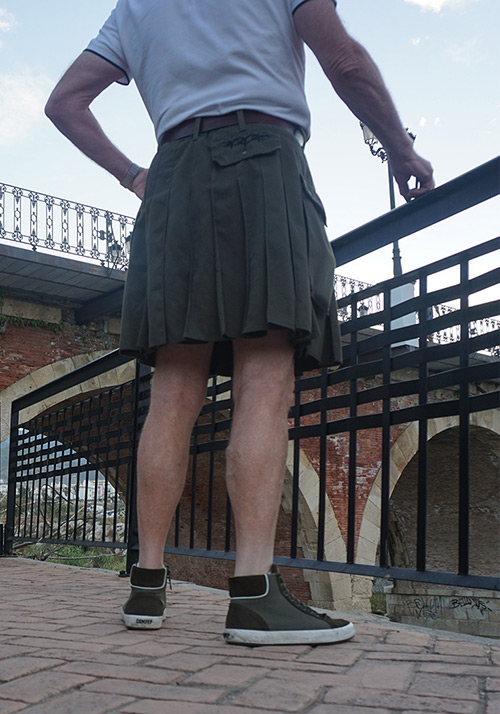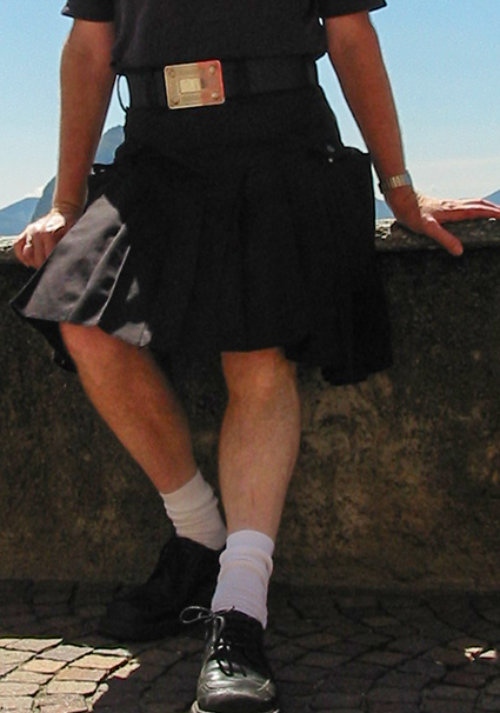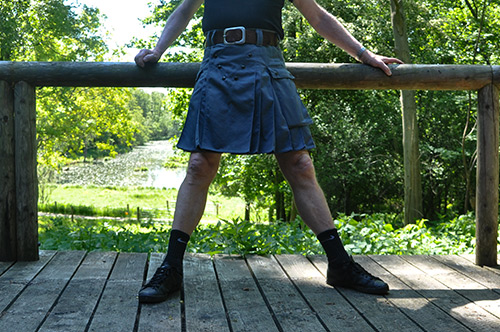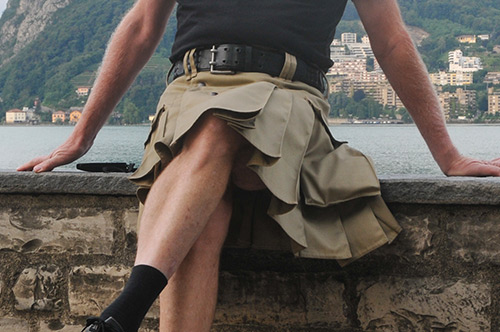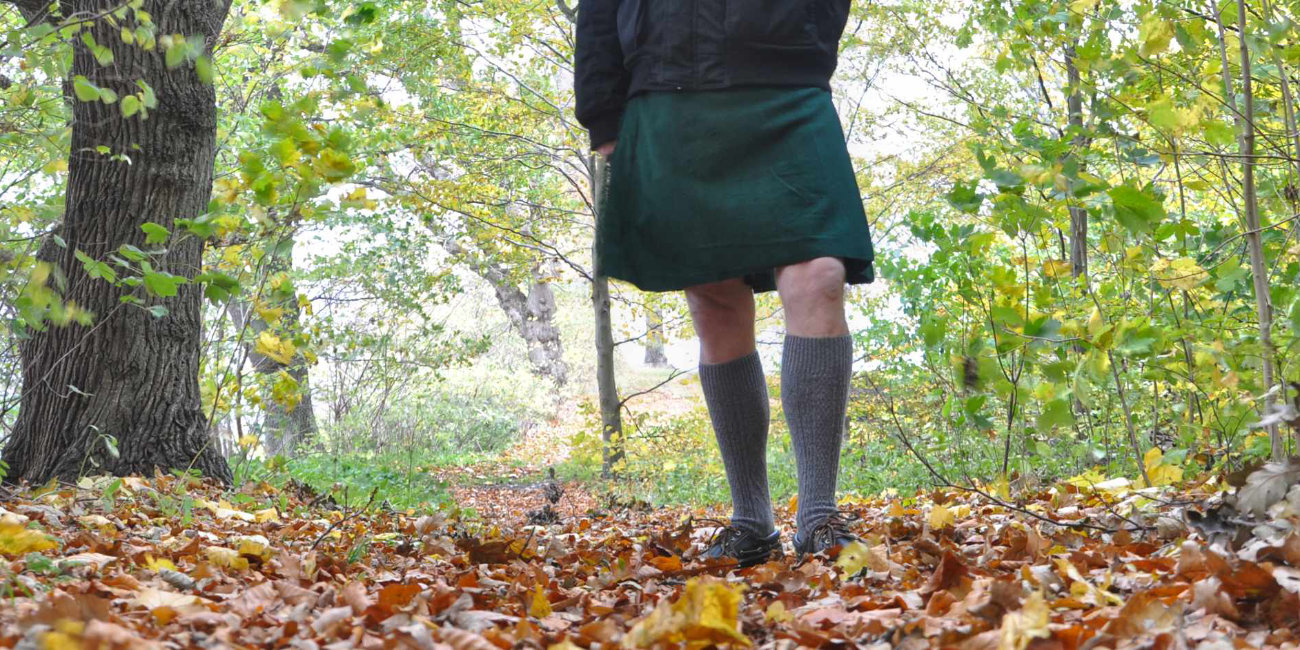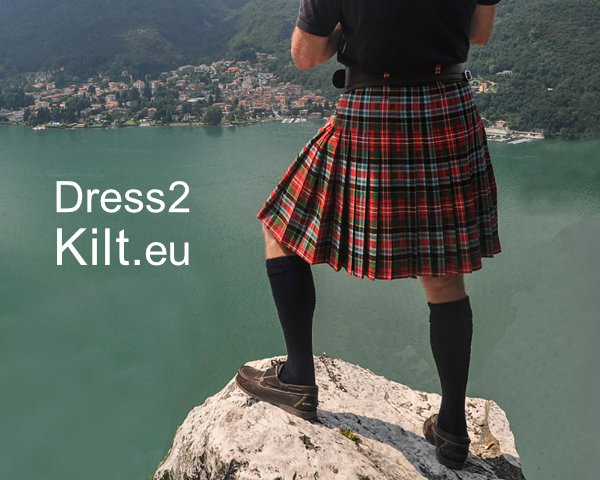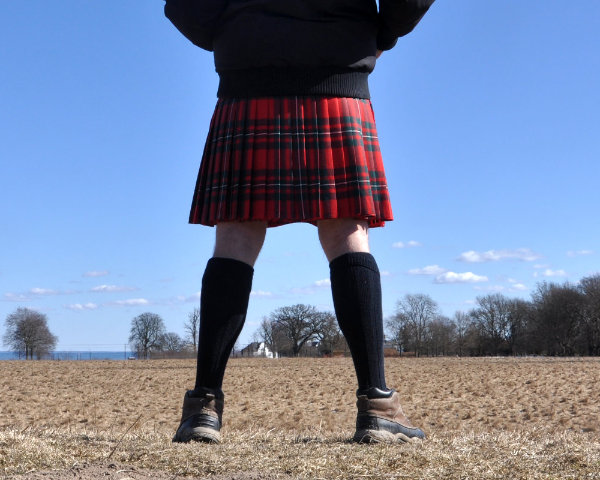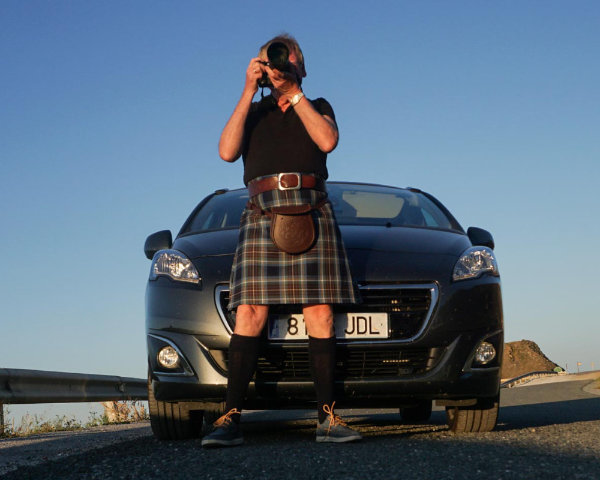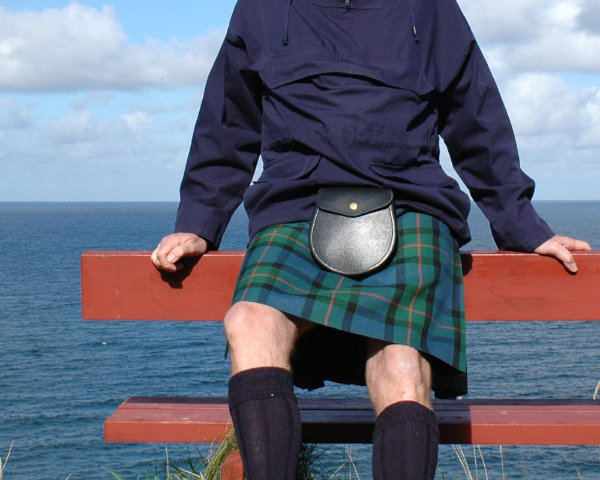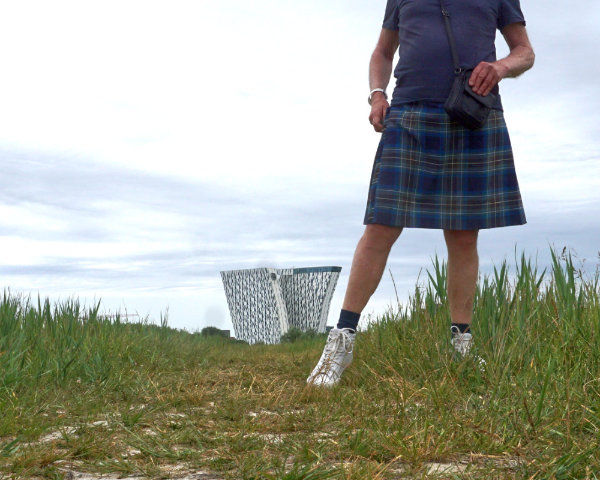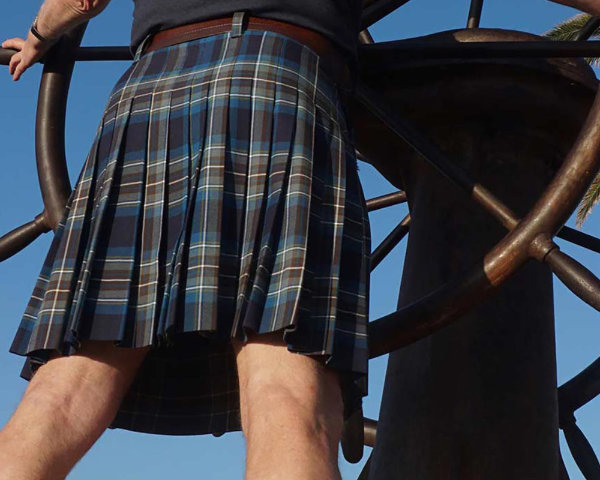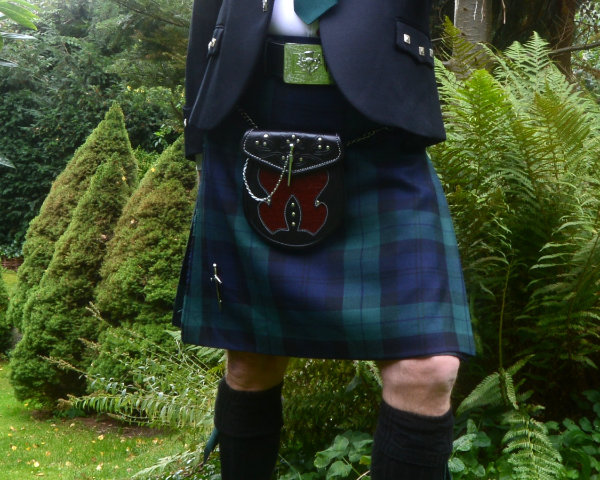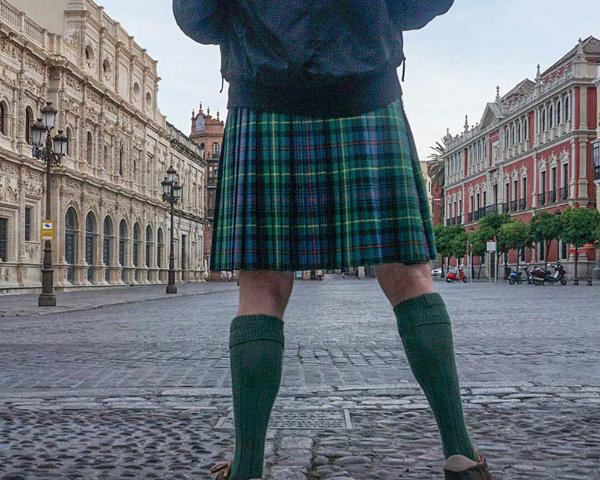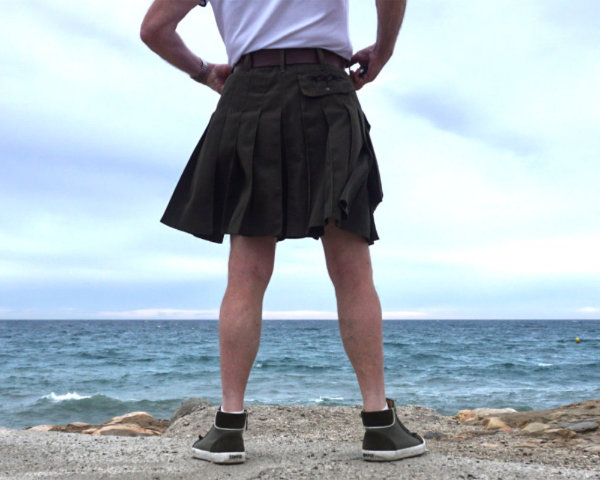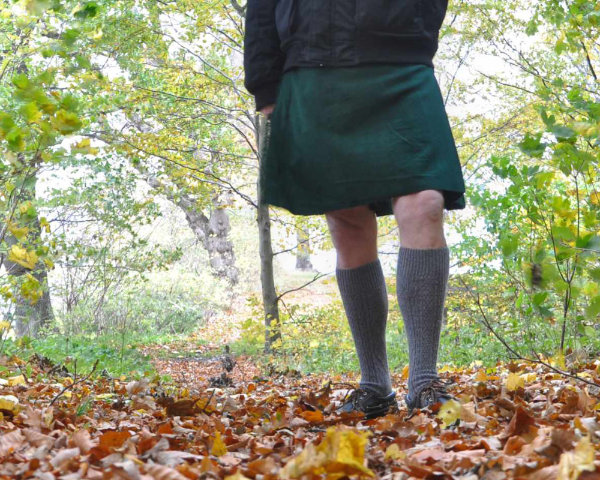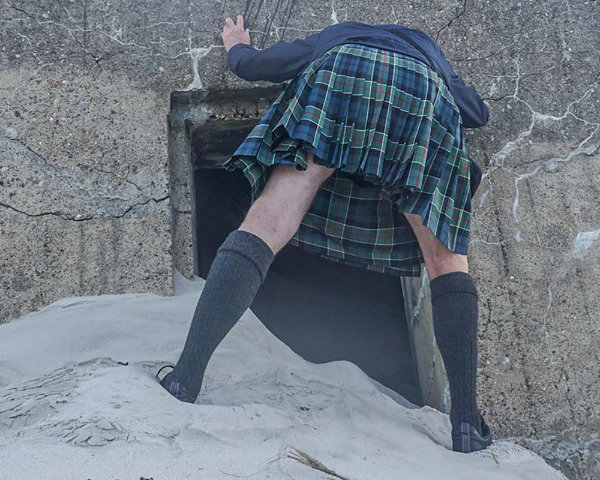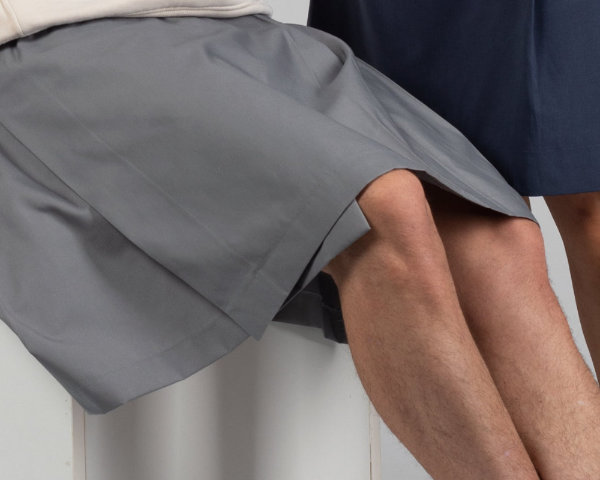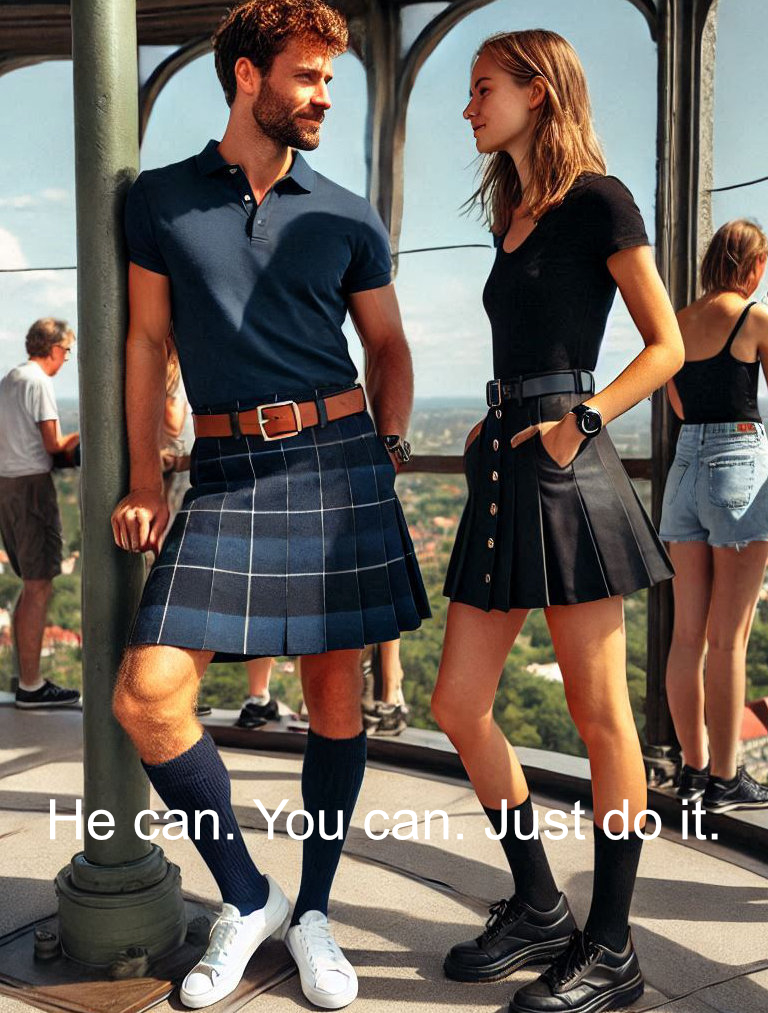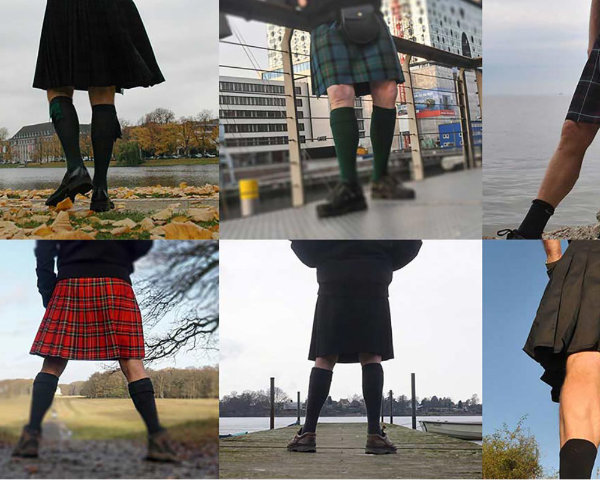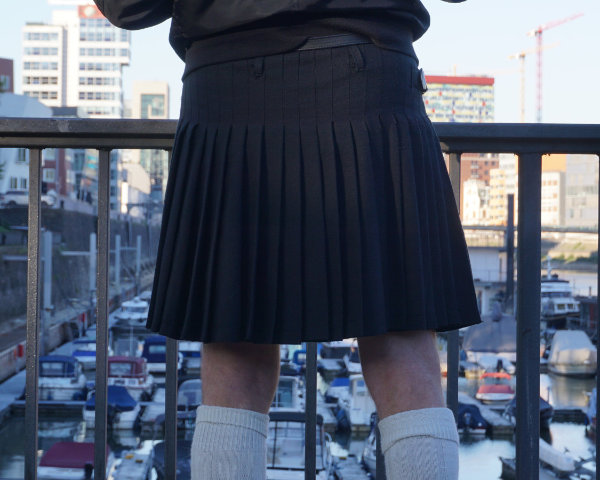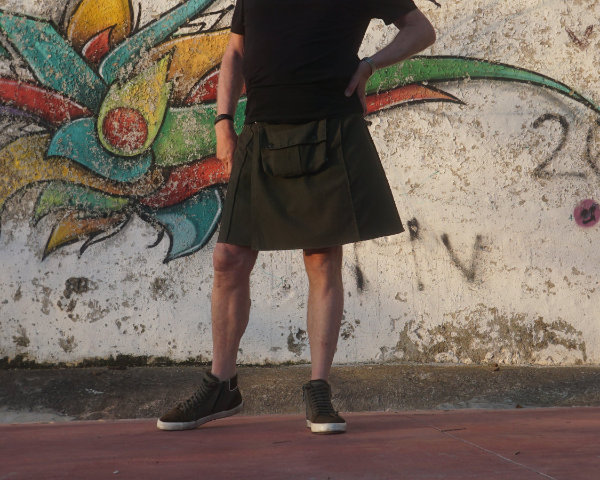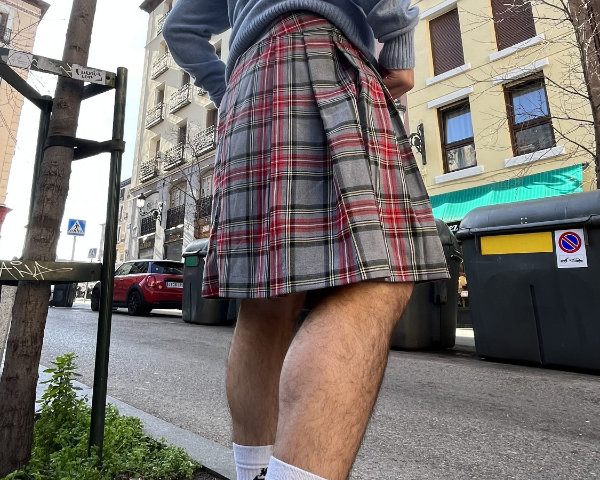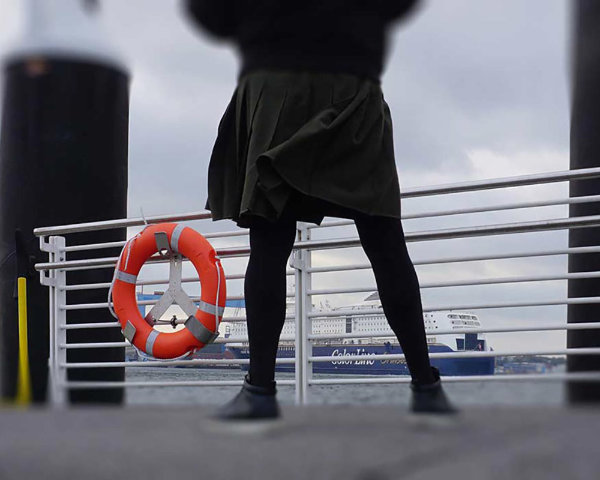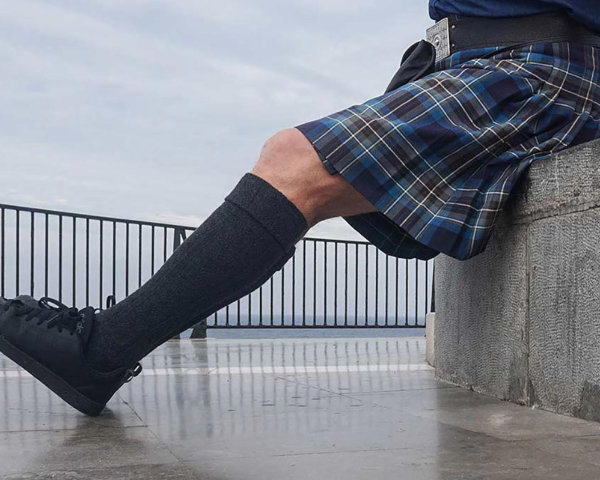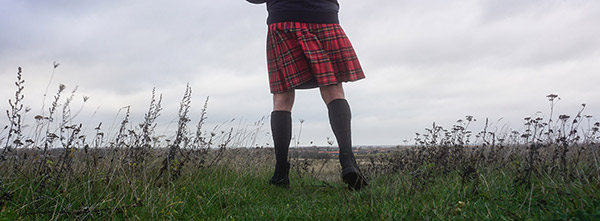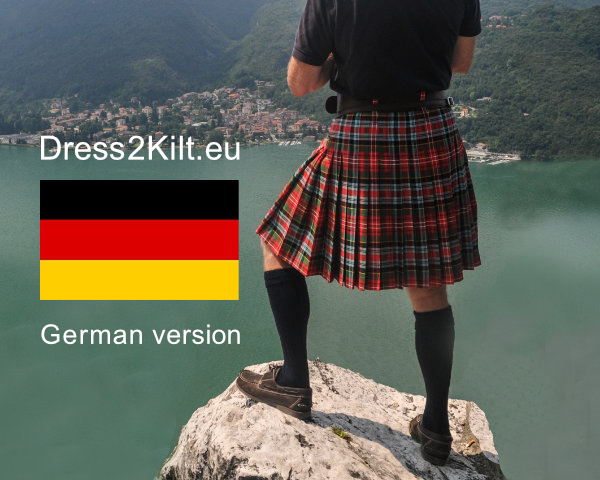Going for something more casual, something easier to maintain, something not connected with rules for wearing and with no need for special accessories? A utility kilt might be what you are after.
Like once, traditional kilts were made in Scotland only, utility kilts were made in USA and Canada, and they were called
modern kilts, sometimes
American kilts. Today, most utility kilts, wherever the vendor of them is situated, might be made in Pakistan, like traditional kilts.
Where the Scottish kilt is several hundred years old and its origin somewhat unclear, the first utility kilt hit the market in 2000, and its inventor is known. His name is
Steven Villegas. He had found out that a skirt was much more comfortable than a pair of jeans, and consequently he designed a skirted garment for men. He positioned it as a kilt, named it
Utilikilt, founded Utilikilts.com in Seattle, USA, and started marketing it by
selling freedom. It immediately became a success and soon after competition emerged, first in the USA and Canada, for example
AmeriKilt and
Freedom Kilts. Later the Pakistani manufacturers, making already tartan kilts, started sewing modern kilts, now called
utility kilts. So, the brand Utilikilt has given name to the whole category.
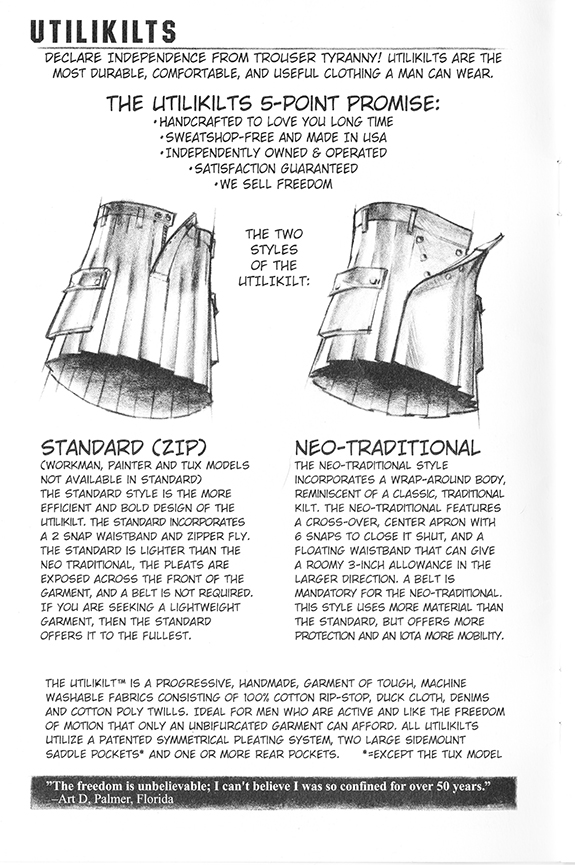
Pages form the Utilikilt catalogue 2002. You could have a Utilikilt in two versions,
The Original Standard and
The Original Neo Traditional. The Standard might have been the first Utilikilt from year 2000.
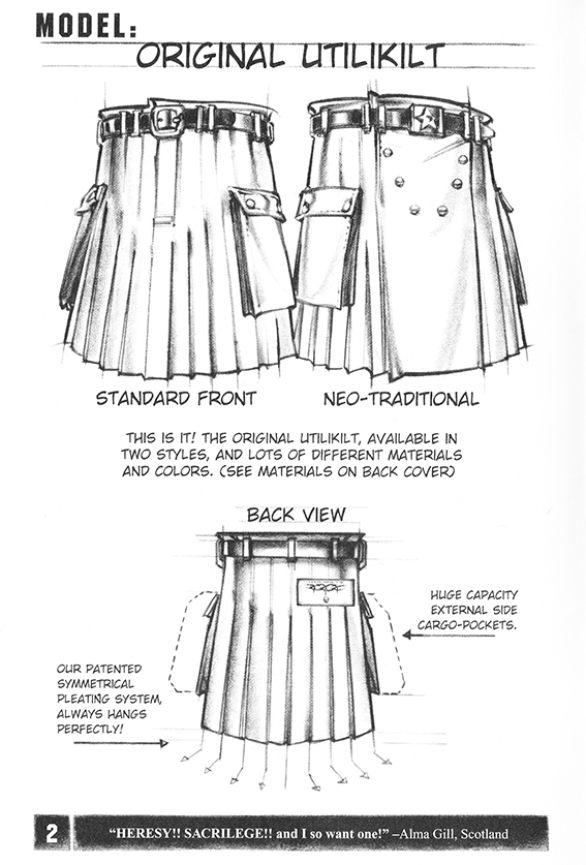
The Standard had a zip front and pleats all way round. Therefore, it, tecnically, was a skirt, rather than a kilt.
My first Utilikilt, which I bought in 2002, was The Standard, the one with the zip front. I still wear it. The Standard might have disappeared in the mid-zeros and from the internet I know that some are still missing it .
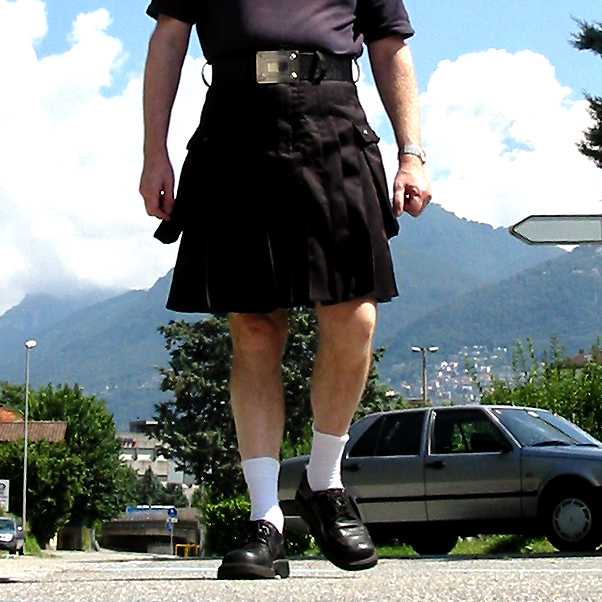 The Utilikilt Original Standard. Lugano, Schweiz 2002.
The Utilikilt Original Standard. Lugano, Schweiz 2002.
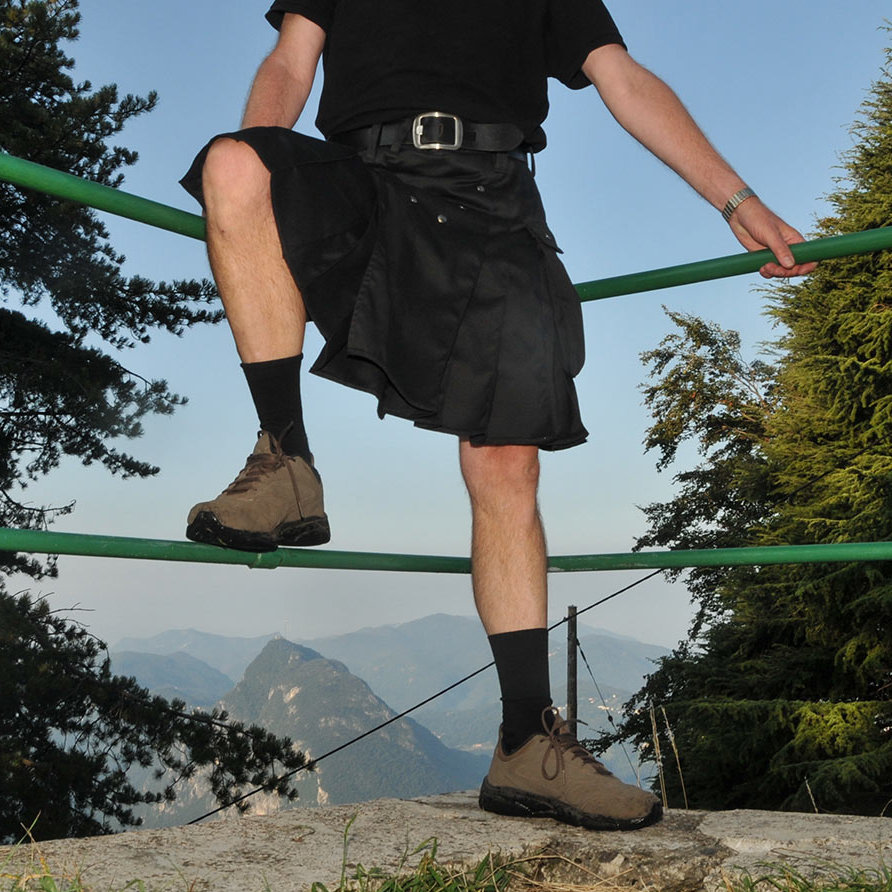 The Utilikilt Original Neo-Traditional. It now is called The Spartan and has a modified design. Lugano, Schwitzerland 2008.
The Utilikilt Original Neo-Traditional. It now is called The Spartan and has a modified design. Lugano, Schwitzerland 2008.
Who will wear a utility kilt?
Despite the Utilikilt had little resemblance with the traditional kilt, except it was pleated on the back, it soon got very popular, also among American kilt wearers with Scottish roots, this indicating that a skirted garment by itself might count as much as or more than heritage. And nothing wrong about that.
But wearers also count men, simply wanting something different, yet manly.
What characterizes a utility kilt?
No strict design definitions exist. It has pleats on the back, it will be of the wrap skirt type and that's it.
The fabric is denim or twill, making the kilt go into the washing machine. The aprons are narrower, than on a traditional kilt, like from 10 to 14 o'clock, rather than from 9 to 15.
Most often it comes with many and big cargo pockets and it is closed by means of visible metal buttons. Some utility kilts will even have metal chains, obviously with the purpose of attracting men in the goth segment.
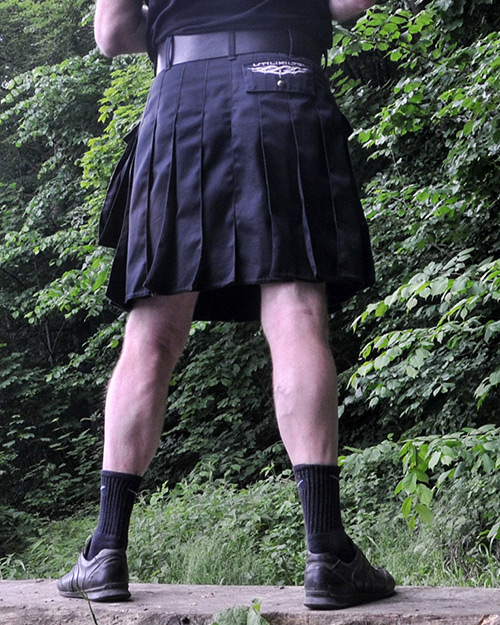 Utilikilt Original Black.
Utilikilt Original Black.
Today, Utilikilts look slightly different on the front, more on the back due to the "switchback" design.
I prefer the original look, but if the new one sells better, it is better. The successor of The Original is called The Spartan.
As much as I, in general, like this type of kilts, as much would I prefer that they came with less pockets – if any – and that they would have less metal buttons - if any. Probably the intention has been to give the skirted garment a manlier note. But a traditional kilt, which definitely is regarded manly, has none of the kind.
The Utilikilt Mocker with its inside pockets is coming close to my ideal kilt.
Where and which utility kilt to buy?
Utilikilts
First, there is the original, the Utilikilt. Today it has almost iconic status. It is being made in USA, and the quality is excellent, three facts contributing to the kilt being premium priced. The cheapest model, The Spartan, is $260. If you are living in Germany, this kilt is, due to high shipment cost, customs duty, VAT, and a customs clearance fee going to cost you about 450€. In EU-countries like Denmark and Sweden with a higher VAT rate, it shall be over 475€.
A Utilikilt is not custom made, but you have three different lengths to choose, and every waist size (in two-inch increments) is, due to the special
switchback system, adjustable by 15%.
The Utilikilt Mocker is $300. Just two years
ago, you could have it for $200.
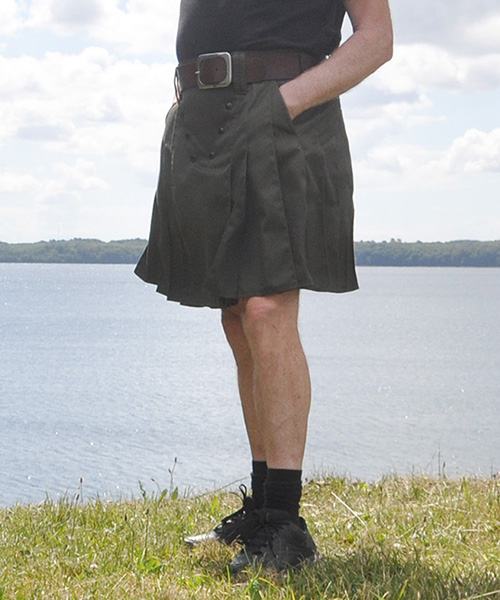 Utilikilt Mocker Olive.
Utilikilt Mocker Olive.
Slide pockets instead of cargo ones give the kilt a clean and more elegant design.
I have nine utility kilts, six of them being Utilikilts.
5.11 Tactical.com
An American company, with subsidiaries in The European Union, makes clothing and accessories “BUILT FOR PURPOSE. BUILT TO LAST.”
In their assortment they have a Tactical Duty kilt which, in 2012, started as
a great April Fool’s prank – we “launched” our tactical kilt by releasing a reveal video with no intention of actually producing the kilt.
Turns out, the joke was on us. As soon as we released the video, it went viral, and people started asking us how to buy the kilt.
We started with a few thousand kilts, which flew out of the warehouse in no time. Because they sold out (and because there were still kilt-less people asking to order them), we ran a kilt promotion the next year…and the next…and, well, you get the picture.
Eventually we started producing the kilt without waiting for a promotion or special occasion. In fact, our customers have used their kilts for tactical training and even in first-responder bands – and the kilts have responded.”
Probably, it started with
this YouTube video. In 2014, they 'relaunched" the kilt
this way.
In Europe, their warehouse is in Sweden. Therefore, European Union customers can have their Tactical Kilt without taxes and at low freight cost.
The 5.11 Commando kilt
It is lightweight, meaning best at higher temperatures. It comes with two detachable cargo pockets and practical, deep slide pockets and belt loops. Emphasis is put on durability and comfort.
The thoughtful design allows for any active movements without fear of getting into an uncomfortable situation, especially if you decide to wear the kilt traditionally without underwear.”
5.11 doesn’t inform about the length. It is 24”. It has hardly visible pleats at the rear, most are at the sides. Nevertheless it measures about three inches at the seam.
In January 2025 they had a sale. I got a kilt for only 33 € which is a third of the normal price. Often you can buy it with a price off at around 70 €. My advice is to go down one size. Mine is to the big side. With its 24” length and my 176 cm (5’9”) it covers my knees. But I think I’ll get accustomed to it. After all, women’s skirts are to buy in all lengths with a tendency towards becoming longer.
I look forward to wear it out and about when temperatures go up.
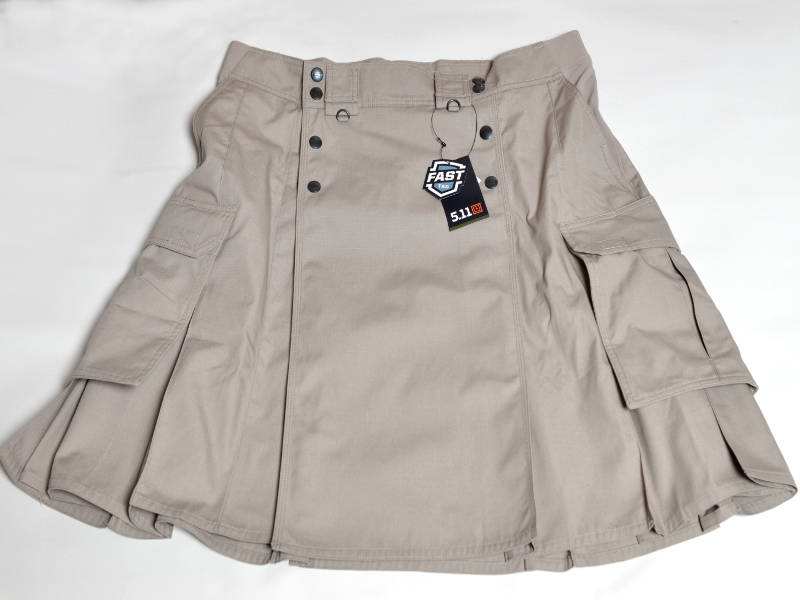 5.11 Commando kilt, front.
5.11 Commando kilt, front.
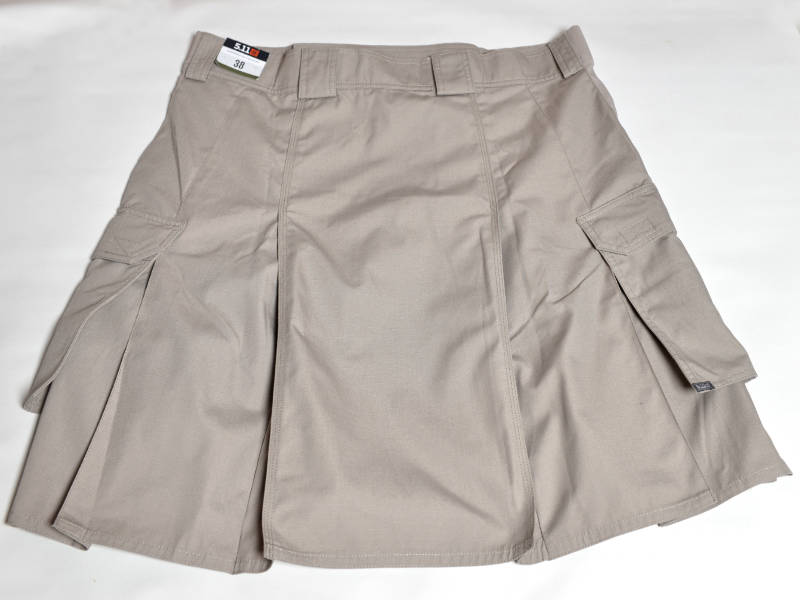 5.11 Commando kilt, hardly any pleats at the rear.
5.11 Commando kilt, hardly any pleats at the rear.
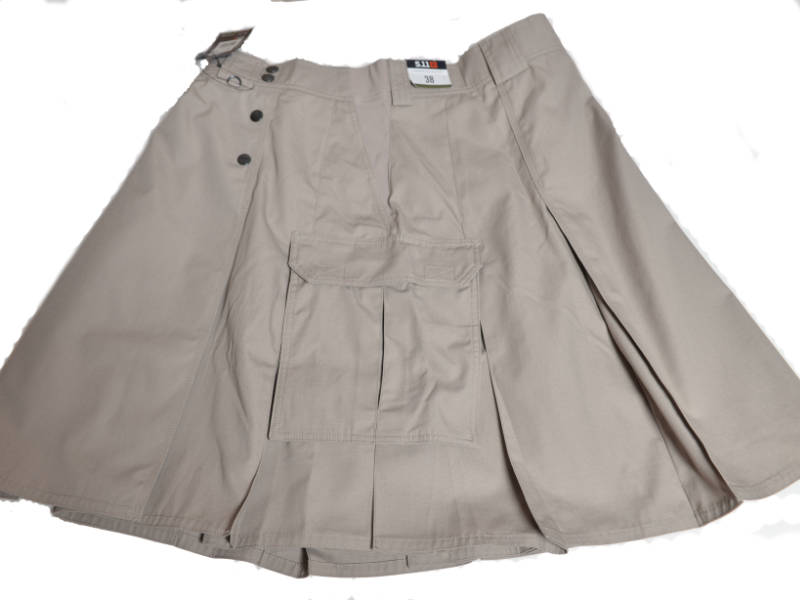 5.11 Commando kilt, seen from the side. Above the detachable cargo pockets it has deep slide pockets.
5.11 Commando kilt, seen from the side. Above the detachable cargo pockets it has deep slide pockets.
 The 24" standard length means that the kilt covers my knees.
The 24" standard length means that the kilt covers my knees.
The Pakistani competition
The Pakistani utility kilts, I have been able to take a closer look at, have all been of very good quality.
However, by a direct comparison the Utilikilt wins. Sense for detail, as well as usage of high-grade buttons and fabrics makes a Utilikilt a better kilt.
Also, utility kilts made in Pakistan often come with an excessive use of cargo pockets, buttons, and chains.
But there
are exceptions. And there is a substantial price difference.
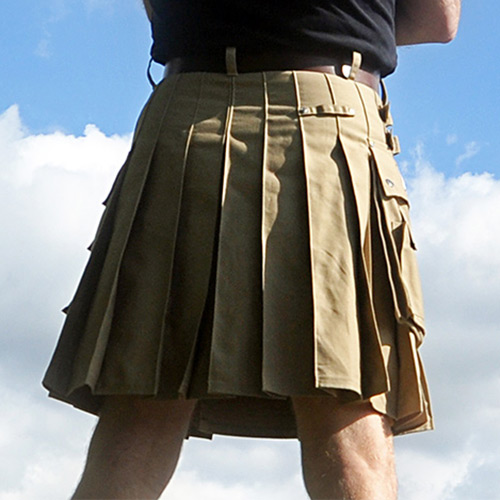 When you buy a low-priced, ready-made utility kilt from a vendor in USA, UK or whereever, you don't know who has manufactured it. Chances are it comes from Expo International, which, however, is only one of several B2B manufacturers, all of them concentrated in the city of Sialkot in Northern Pakistan. The picture shows a utility kilt made by Expo International.
When you buy a low-priced, ready-made utility kilt from a vendor in USA, UK or whereever, you don't know who has manufactured it. Chances are it comes from Expo International, which, however, is only one of several B2B manufacturers, all of them concentrated in the city of Sialkot in Northern Pakistan. The picture shows a utility kilt made by Expo International. Kilt & More
You might take a look at Kilt & More, being only one of many vendors offering similar kilts in the US and Europe.
They have innumerable models of utility kilts in their assortment, even if not all of them are quite to my taste.
Championkilts.com
They have very many utility kilts with buttons, enormous cargo pockets etc. but then they also have this one:
THE UTILITY KILT TO BUY!
If you, like me, prefer utility kilts with only few buttons and slide pockets instead of cargo ones, this is the utility kilt to buy.
The design is clean and straight-forward. And the kilt need not be black. This model is available in no less than 15 colours, and it can be ordered to exactly fit you. Maybe the fabric is not as good as the one, Utilikilts use for The Mocker, perhaps it is not sewn with quite the same precision. But considering, that the price, when writing this, is only
1/5 of that of the Utilikilt Mocker, it certainly is a best buy.
Then it has no Switchback system or anything else of its kind, making it just as non-adjustable as your jeans. So, you must be more careful when measuring your waist, but then it looks far better on the back.
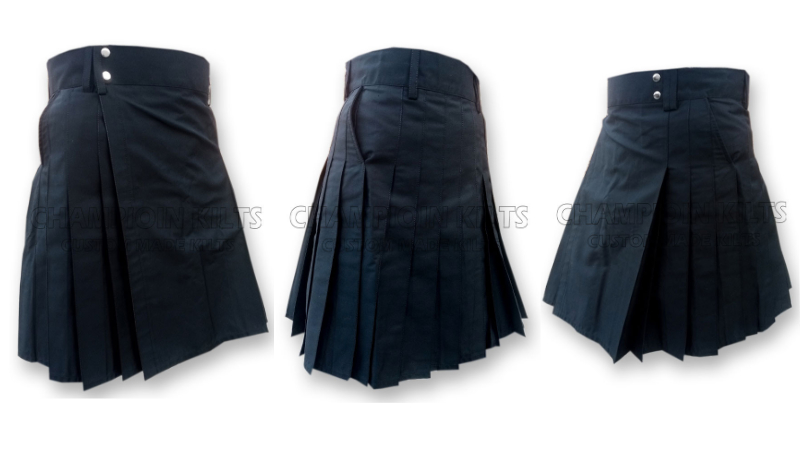 Championkilts Black Stylish Utilikilt.
Championkilts Black Stylish Utilikilt.
The pictures are property of Championskilts; published here with their consent.
This either black, blue, brown, burgundy, grey, green, khaki, navy blue, olive, orange, pink, purple, red, white or yellow stylish utility kilt from Champion Kilts is the utility kilt of my choice 2025, the one I should buy, were I in the market for another one.
Want something for hard work?
Blåklädar
A Swedish company specialized in workwear and operating international has since many years kilts in their assortment.
When and where to wear a utility kilt?
A utility kilt is meant to replace blue jeans and shorts, meaning for casual wear. The better ones are for smart casual wear, too.
How about length?
No rules exist. So, no rules, why don’t experiment a little bit, especially with cheap kilts? Have one kilt cover your knees, have another one go to the top of your knees, and a third one end 2-3 inches above them? Perhaps a fourth kilt could be even mid-thigh. Just be aware that too long looks femme, too short girlish.
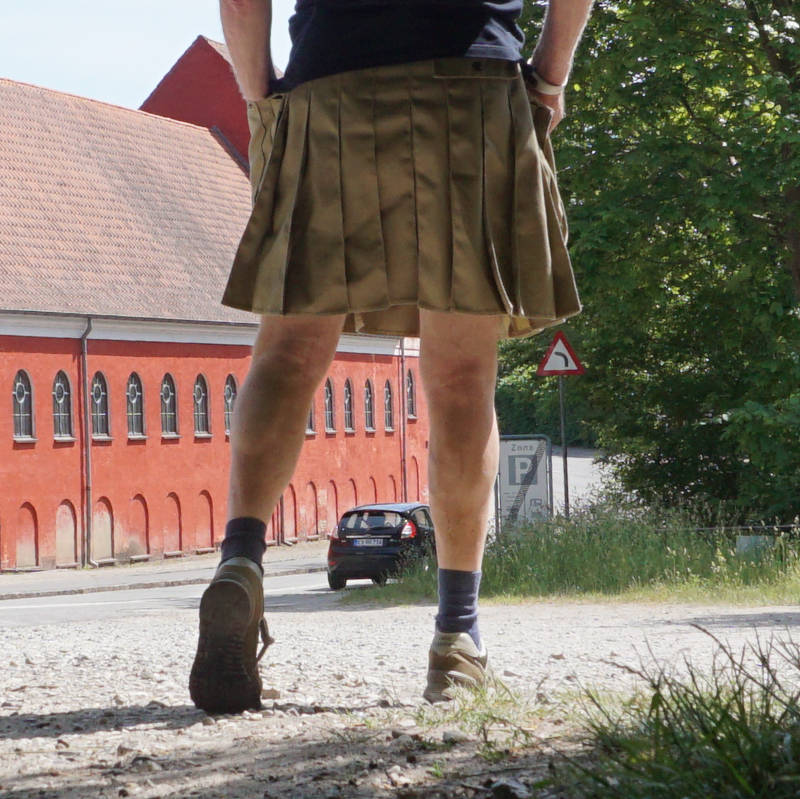 Utilikilt Original. Mid-thigh length.
Utilikilt Original. Mid-thigh length.
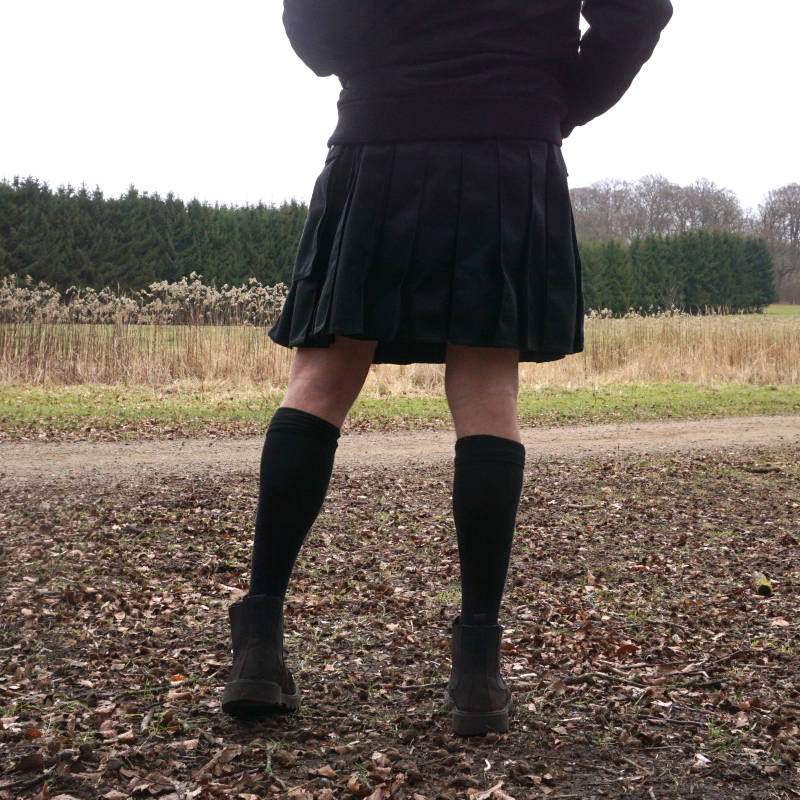 Utilikilt Original. 1-2 inches above knee.
Utilikilt Original. 1-2 inches above knee.
 Utilikilt Mocker. Knee length.
Utilikilt Mocker. Knee length.
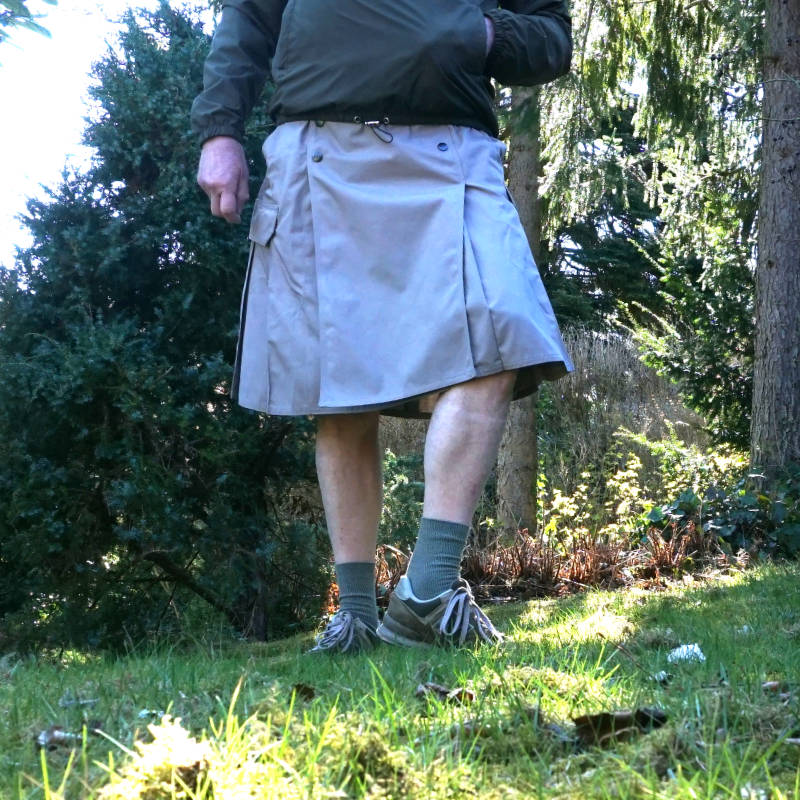 5.11 Tactical kilt. Below knee length.
5.11 Tactical kilt. Below knee length.
My utility kilts are between 20.5" and 24" short/long. Considering, there is also a 2-3" variance at the waist line, the look can go from very short to very long.
Accessories?
No rules. No need for a sporran. The only thing needed might be a wide belt.
A belt is the only thing, I wear with my utility kilts.
Socks?
In summer it is easy. Short socks or no socks look great. But when it’s cold? Kilt hose or other knee-high socks. Some will wear tights or leggings, either as a fashion statement or as protection when temperatures are low. No rules, feel free to wear what you on that particular day feel like, or what seems the best solution for the occasion.
With utility kilts, my preference list says
1. short socks
2. tights
3. leggings (with boots)
4. knee-high socks
5. kilt socks.
I can't tell why but I think kilt socks look somewhat wrong with utility kilts. Therefore, when short socks aren't enough, I'll most often wear tights or leggings.
Footwear?
High boots, low boots, heavy shoes, sneakers, and you name it, are what to wear. Everything is allowed, only forgo dress shoes. They look odd with a utility kilt.
The no-rules-thing is what makes utility kilts unique. Just feel free to be free. To be you.
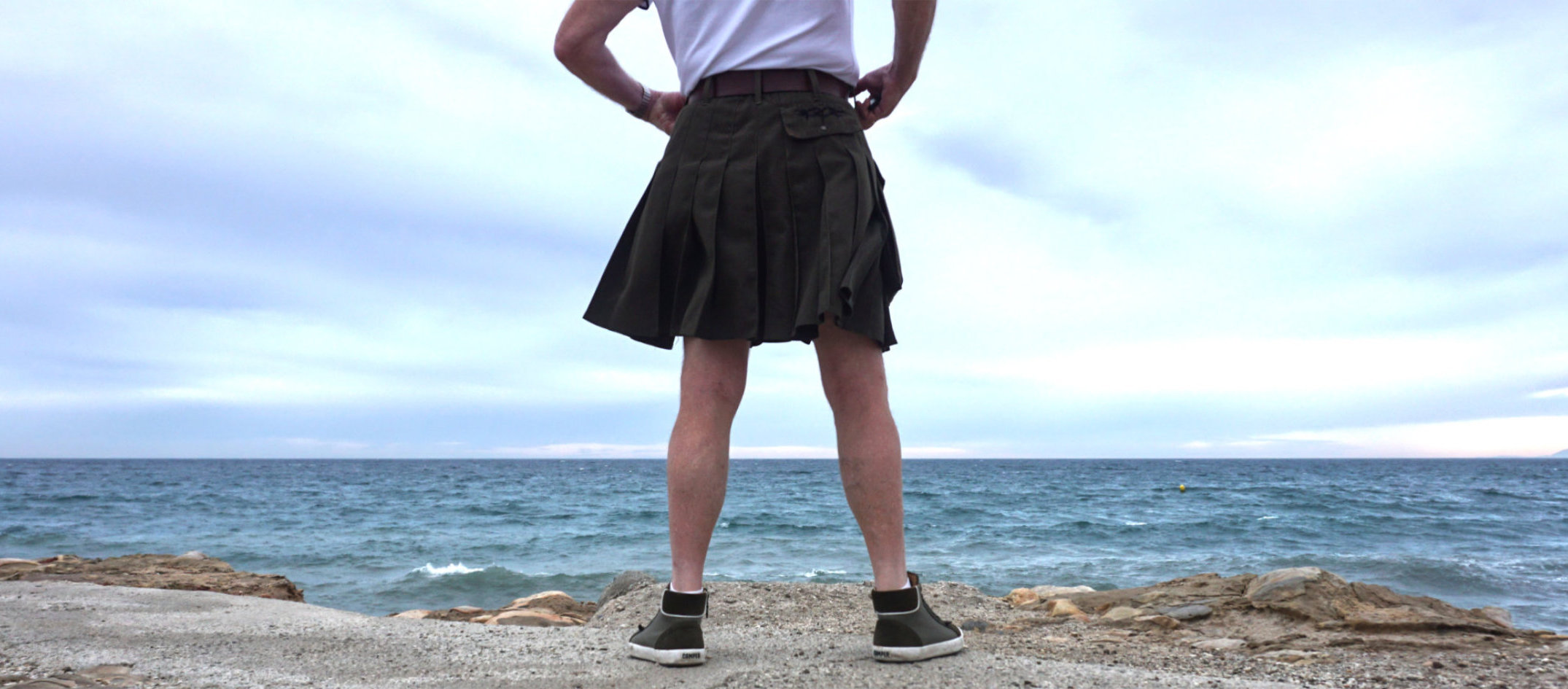

 Pages form the Utilikilt catalogue 2002. You could have a Utilikilt in two versions, The Original Standard and The Original Neo Traditional. The Standard might have been the first Utilikilt from year 2000.
Pages form the Utilikilt catalogue 2002. You could have a Utilikilt in two versions, The Original Standard and The Original Neo Traditional. The Standard might have been the first Utilikilt from year 2000.












